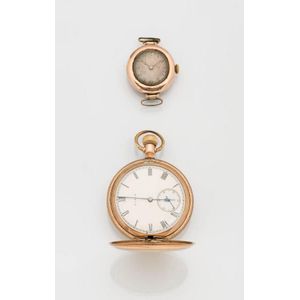Hand-painted Minton bone china ewers with cherubs and gilt
You must be a subscriber, and be logged in to view price and dealer details.
Subscribe Now to view actual auction price for this item
When you subscribe, you have the option of setting the currency in which to display prices to $Au, $US, $NZ or Stg.
- Satyr - A creature from Greek mythology with goat-like features, including a bearded face and horns, a man's torso, hairy legs and cloven hooves and a tail. As attendants of Bacchus, satyrs sometimes carry grapes or pitchers of wine. As spitis of fertility they may carry a cornucopia or basket of fruit.
They are also used to portray lust, and are often depicted with a leering expression. As well as being depicted singly or in a group in sculpture and candelabra, they also appear as motifs on ceramics, glass, silver and gold objects. - Bone China - Bone china, Also called 'English china", is one of the three types of porcelain, the other two being soft paste porcelain and hard paste porcelain.
Porcelain is an ancient ceramic material, first made in China, hence the common name "china", and the introduction of bone china was to counter the imports of Chinese porcelain.
The initial development of bone china is credited to Josiah Spode, who introduced it around 1800 and it was soon after copied by other manufacturers including Minton, Coalport, Davenport, Derby, Worcester, Wedgwood and Rockingham and the Herculaneum factory at Liverpool.
Spode's bone china was made by mixing ash from cattle bones with feldspar and kaolin, which created a material that was stronger, more translucent, and whiter than traditional porcelain. He began to produce this new type of porcelain in 1796 and it quickly became very popular.
At the time, the process and ingredients were kept secret and were only known to a few manufacturers and were protected by patents.
In the 19th century, bone china became increasingly popular and was widely produced by many manufacturers in England. During this time, it was considered a luxury item and was often used to create fine dining sets and other decorative items.
Bone china is still used in the production of fine porcelain wares, such as tea sets, figurines, and other decorative pieces. His basic formula of six parts bone ash, four parts china stone, and three and a half parts china clay remains the standard English body. It is still considered a luxury item due to its strength, translucency, and whiteness, and is often used for high-end and high-quality porcelain. China. - Socle - The short plinth, usually cylindrical, that serves as a pedestal for a sculpture or vase
- Oviform /ovoid - The outline loosely resembling the shape of an egg.
This item has been included into following indexes:
Visually similar items

A ladies 14ct yellow gold D.A.C pocket watch white dial with black Roman numeral, blue hands and engine turned case.

A lady's 9ct gold Rolex and a rolled gold Elgin pocket watch.

A Victorian pair of bog oak & crystal earrings, pinchbeck, Victorian circa 1860's, presented as tassel style drops, featuring a colourless cabochon crystal, rope edge framed in a triangular form, further framed by bog oak panels of scalloped shape, suspend

Early 19th century 18ct gold plated open faced key wind pocket watch quarter repeater and fusee movements with ornate decorative figured Jaquemart automata to the dial frame
